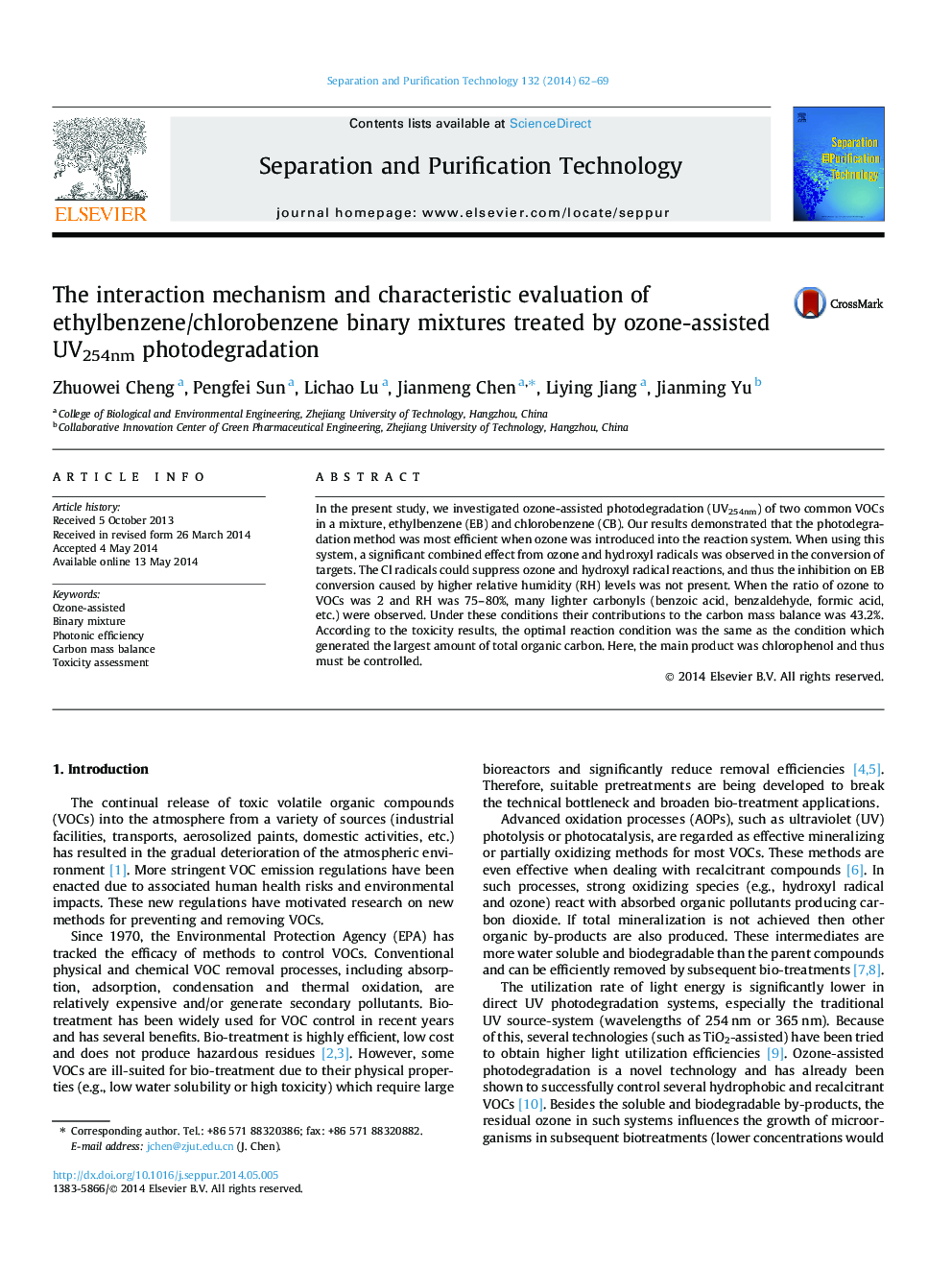| Article ID | Journal | Published Year | Pages | File Type |
|---|---|---|---|---|
| 640994 | Separation and Purification Technology | 2014 | 8 Pages |
•An ozone-assisted photodegradation was developed to convert a binary mixture of VOCs.•The introduction of ozone enhances the photonic efficiency and the conversion of VOCs.•The appearance of CB has a positive effect on EB conversion under various RHs.•Different ozone additions influence the solubility and toxicity of intermediates.•Residual ozone combined with products could regulate the surface of the biofilm.
In the present study, we investigated ozone-assisted photodegradation (UV254nm) of two common VOCs in a mixture, ethylbenzene (EB) and chlorobenzene (CB). Our results demonstrated that the photodegradation method was most efficient when ozone was introduced into the reaction system. When using this system, a significant combined effect from ozone and hydroxyl radicals was observed in the conversion of targets. The Cl radicals could suppress ozone and hydroxyl radical reactions, and thus the inhibition on EB conversion caused by higher relative humidity (RH) levels was not present. When the ratio of ozone to VOCs was 2 and RH was 75–80%, many lighter carbonyls (benzoic acid, benzaldehyde, formic acid, etc.) were observed. Under these conditions their contributions to the carbon mass balance was 43.2%. According to the toxicity results, the optimal reaction condition was the same as the condition which generated the largest amount of total organic carbon. Here, the main product was chlorophenol and thus must be controlled.
Graphical abstractFigure optionsDownload full-size imageDownload as PowerPoint slide
